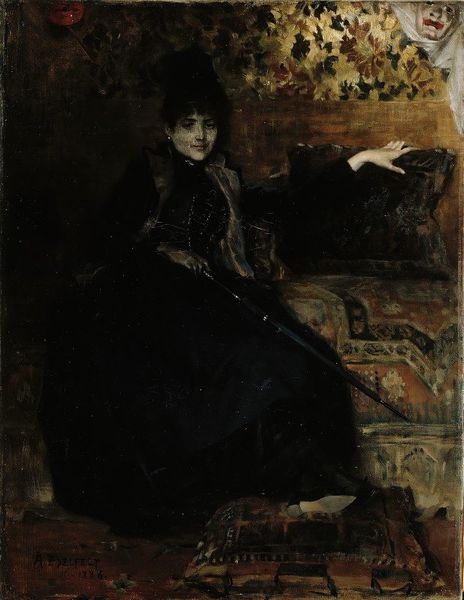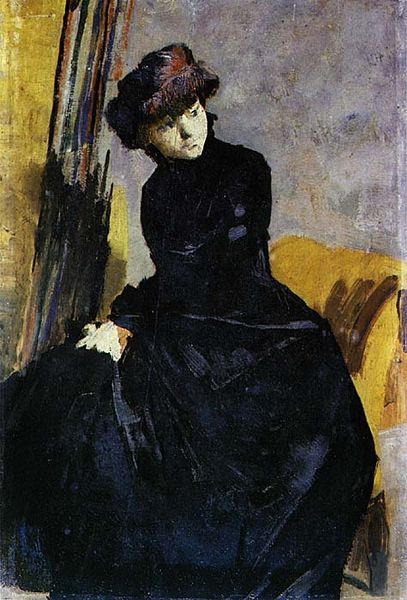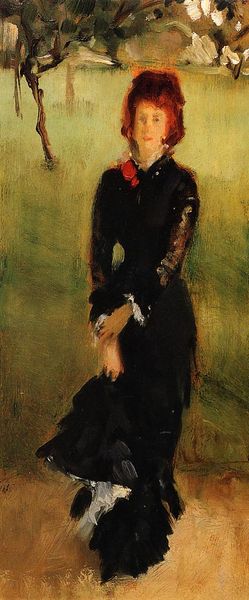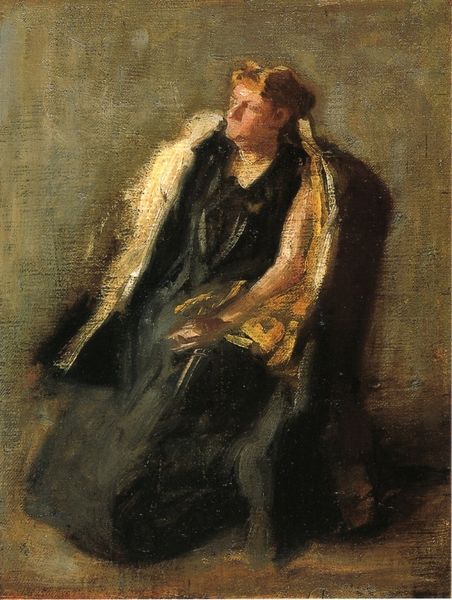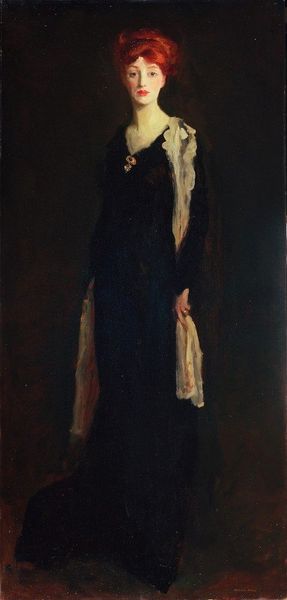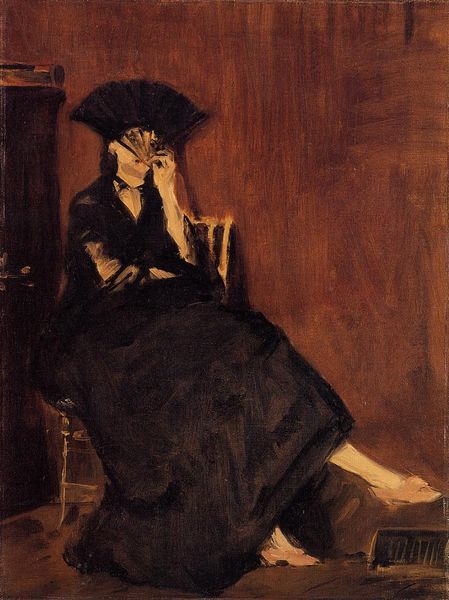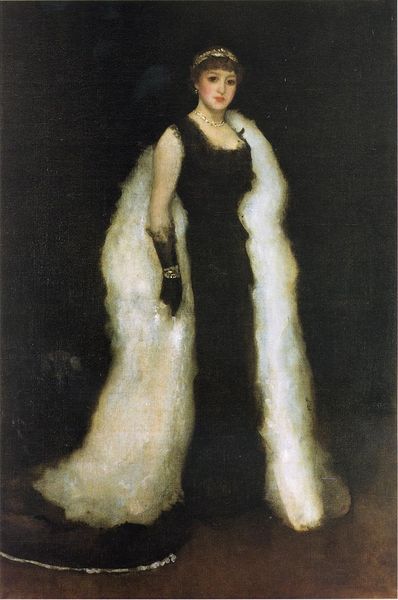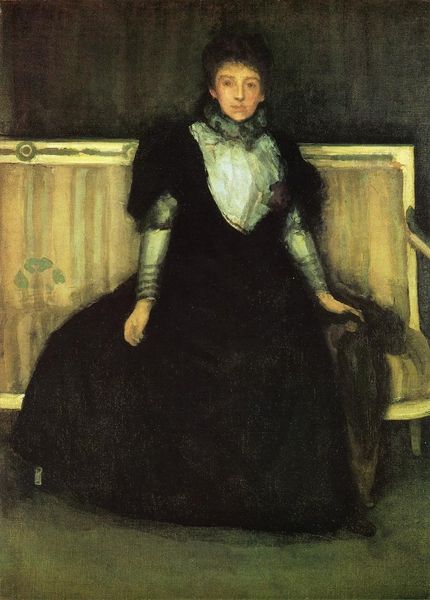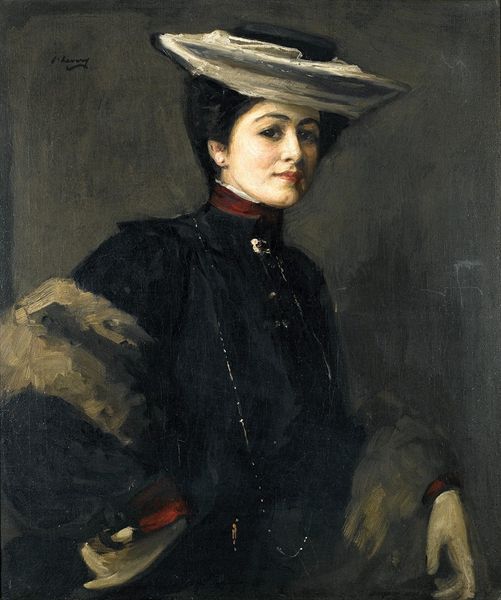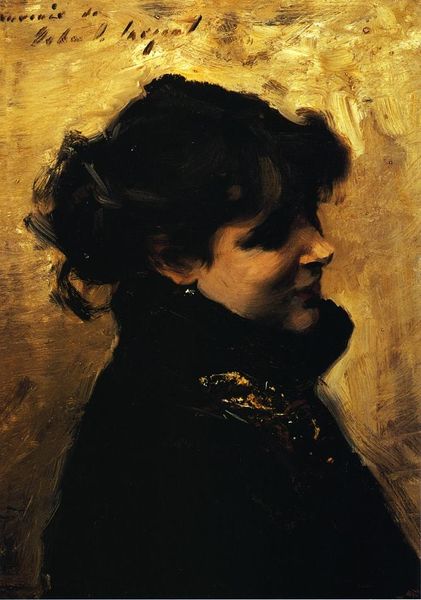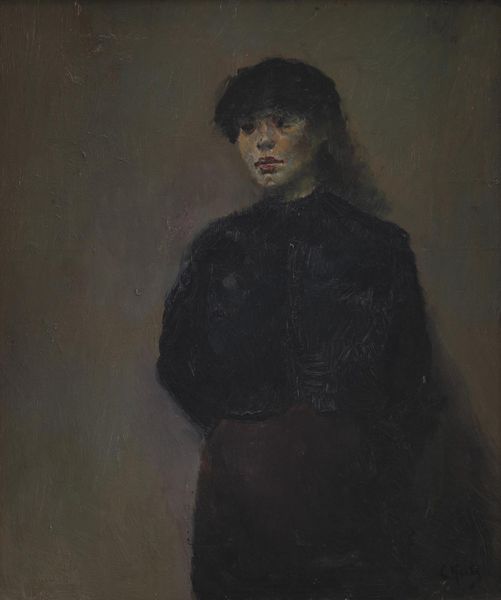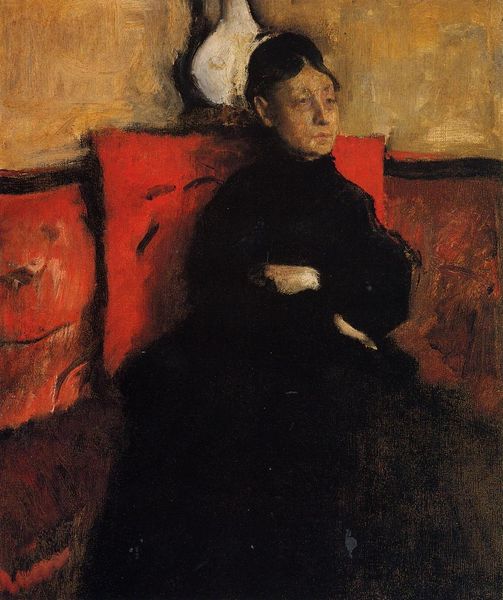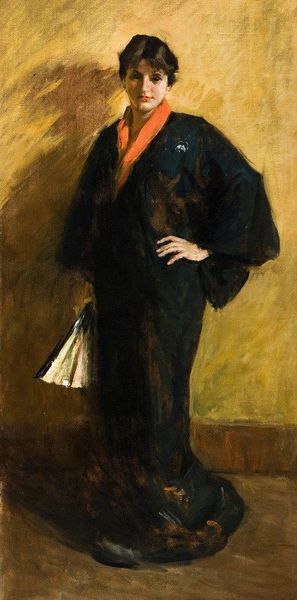
Copyright: Public domain
Curator: This is William Merritt Chase's "Portrait of Mrs. C. (Alice Gerson Chase)," painted around 1895, here at the Carnegie Museum of Art. Editor: My initial reaction? She seems both regal and weary. It's like she's draped in her privilege but weighed down by… something. The dark colors definitely contribute to that mood. Curator: Precisely. The portrait's composition, with the subject positioned against a somber background, does evoke that sense of melancholic aristocracy. It's hard not to read that sable coat as symbolic of class, while the loose, almost impressionistic brushstrokes on its golden lining hint at underlying tensions. We need to remember this portrait of his wife was painted during the turn of the century and during a rise of new ideals on the social expectations and changing role of women in American society. Editor: The way he captures the light… It's subtle, not overly dramatic. Almost as if he's seeing her – really seeing her, beyond the social facade. It also kind of gives it an unfinished feeling, or fleeting, as if capturing a moment. And look at those small touches of red, at the top of her head on her hair. Do you think they represent passion or fire within? Curator: Those touches could signify both passion and the internal conflicts she might have been navigating. Alice Gerson Chase, beyond being the artist's wife, was also grappling with societal expectations imposed on women of her status. The painting is rendered in a very particular moment in women's liberation movements in America. Editor: So, you're saying the painting may subtly critique the restrictive roles prescribed to women, even within affluent circles? Curator: It absolutely could. Chase uses portraiture to explore the psychological depths of his subject while indirectly commenting on the social dynamics of his time. The somber palette becomes almost a visual representation of those constraints, challenged by those pops of red. Editor: It’s amazing how much can be conveyed with just color and brushstroke. This isn’t just a likeness; it’s a narrative of identity and expectation. Curator: Exactly. Artworks like this become crucial historical documents, giving us insights into the lived realities of people often overlooked in dominant historical accounts. Editor: It’s pretty heavy stuff, honestly. Leaves you with a lot to ponder long after you've walked away. Curator: Indeed. Chase offers not just a visual representation, but also a gateway to understanding the nuances of gender, class, and identity at the fin de siècle.
Comments
No comments
Be the first to comment and join the conversation on the ultimate creative platform.
